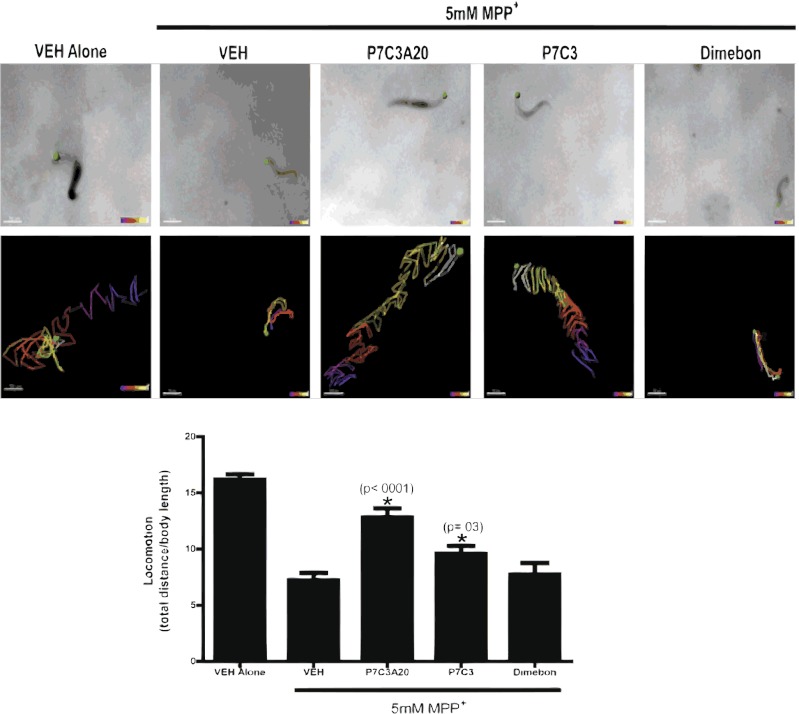Fig. 5.
Protective efficacy of P7C3 and P7C3A20 for MPP+-induced mobility deficits in C. elegans. (Top) Worms with the head identified by a green dot. (Middle) Path taken by each worm in 10 s, determined by tracking the green dot. Tracking is visualized as starting with blue color and progressing to white by the completion of 10 s. The green dot was used to determine locomotion, defined as the distance traveled by the head of the worm in 10 s divided by body length. (Scale bars, 70 μm.) Quantitative analysis of locomotion showed that untreated VEH controls had a value of 16.2 ± 0.49 (n = 30). When worms were treated with MPP+, locomotion was reduced more than 50% (7.2 ± 0.68; n = 31, P < 0.0001). A total of 10 μM P7C3A20 protected mobility to almost 80% of normal (12.8 ± 0.81; n = 34, *P < 0.01), and 10 μM P7C3 protected mobility almost 60% (mobility index = 9.6 ± 0.72; n = 28, *P < 0.05). A total of 10 μM Dimebon did not offer any protection (7.7 ± 1.0; n = 30). Experiments were performed in triplicate and data are expressed as mean ± SEM.

